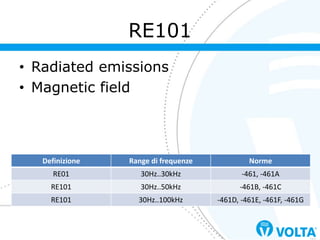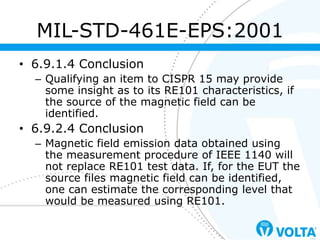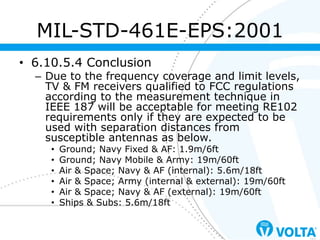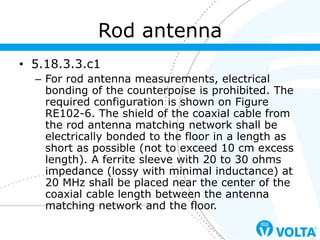The document outlines regulations and standards for measuring radiated emissions in various military applications under MIL-STD-461, specifically focused on frequency ranges from 30 Hz to 40 GHz. It describes test parameters, equipment requirements, and methodologies for ensuring compliance with electromagnetic emission limits in systems used by the Army, Navy, Air Force, and other space systems. Key sections detail the differences in testing for different military branches and emphasize the importance of specific configurations and protocols during testing.





















































